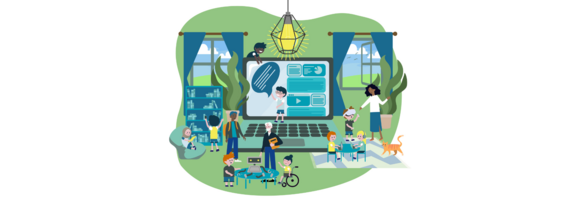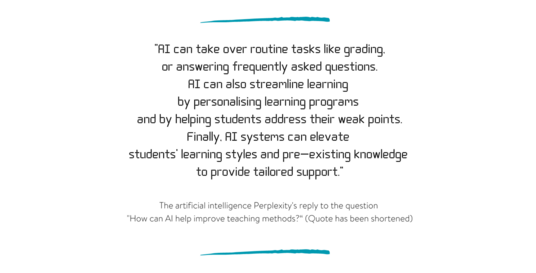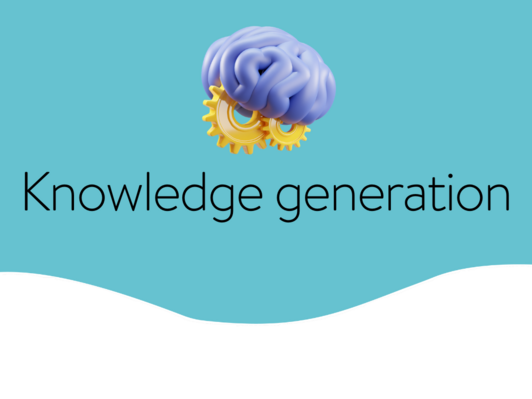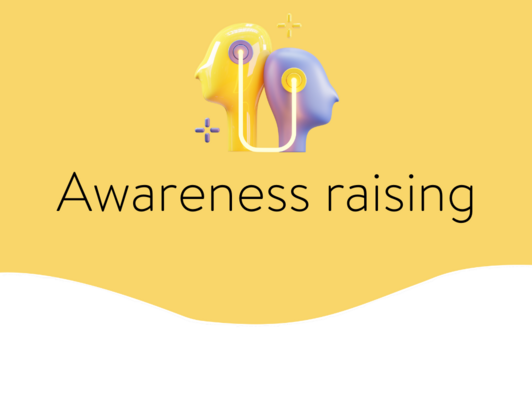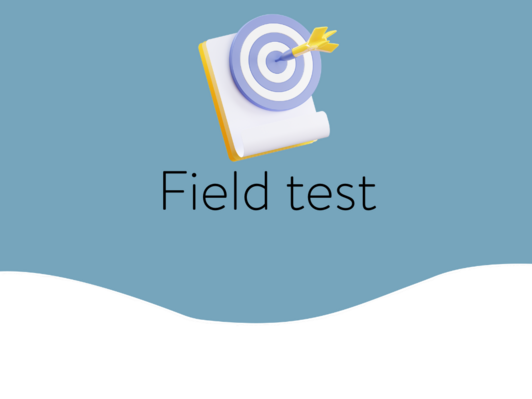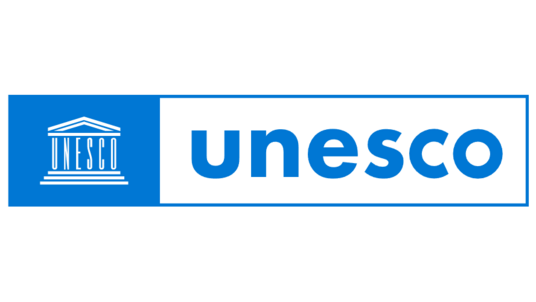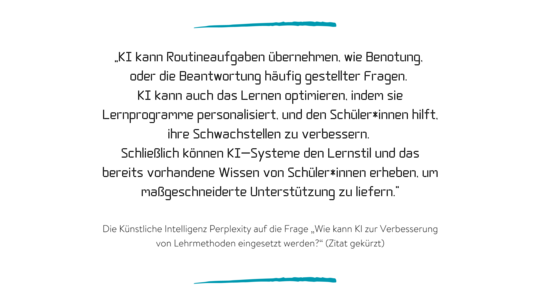We have asked an artificial intelligence (AI) how artificial intelligence can improve teaching methods. The AI’s answer:
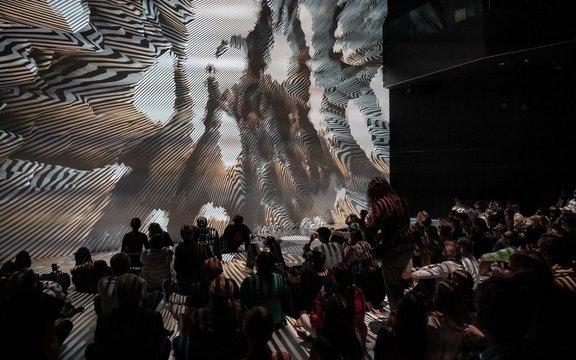
Embracing Technology
Unsere Perspektive auf das Lernen und Lehren mit neuen Technologien
Neue Technologien prägen unsere Gesellschaft und eröffnen auch im Bildungsbereich neue Möglichkeiten. Neben dem Erwerb von digitalen Kompetenzen müssen wir uns didaktisch mit den Potenzialen von neuen Technologien auseinandersetzen:
Wie können wir neue Technologien in die Schulpraxis so integrieren, dass sie gleichzeitig Lernende individuell fördern und Lehrende unterstützen?
Dieser zentralen Frage widmet sich die Innovationsstiftung für Bildung in ihrem neuen Dreijahresschwerpunkt, gemeinsam mit Expert*innen aus der Wissenschaft, dem Bildungssektor und der Wirtschaft.
Wir geben Schulen im Rahmen von geförderten Praxistests die Möglichkeit, neue Technologien im Unterricht und an der Schule zu erproben. Die gewonnenen Erkenntnisse machen wir als Inspiration und Handlungsanleitung verfügbar. Damit wollen wir zur Wissensgenerierung und Bewusstseinsbildung für den innovativen Einsatz von neuen Technologien im Schulbereich beitragen.
